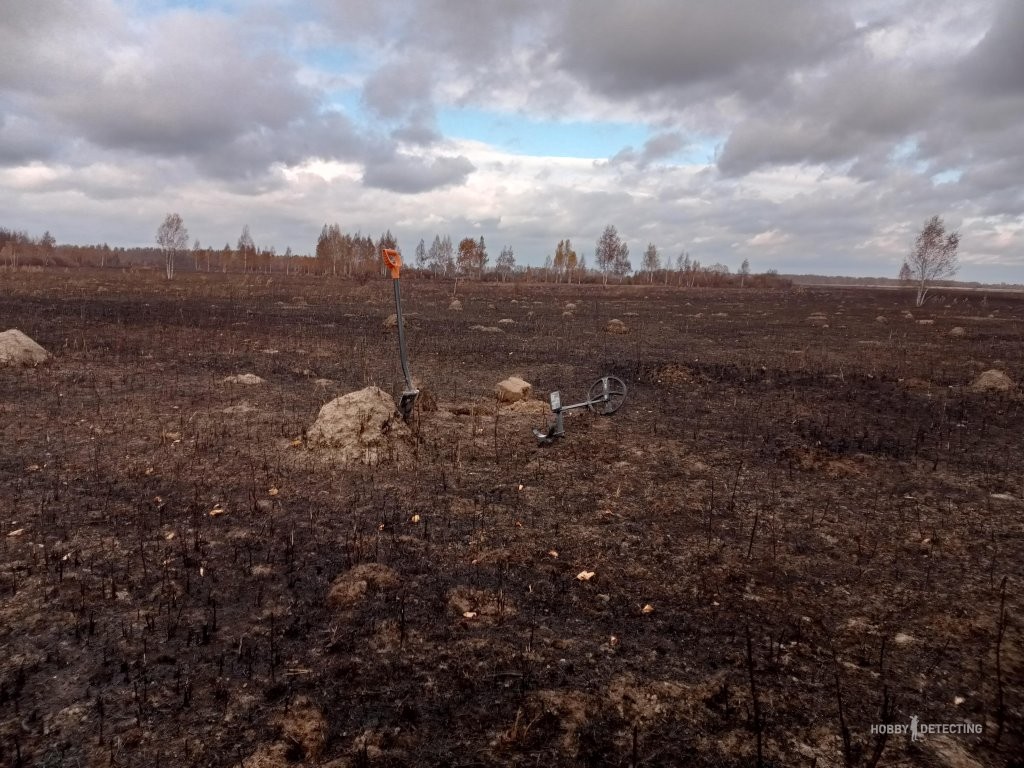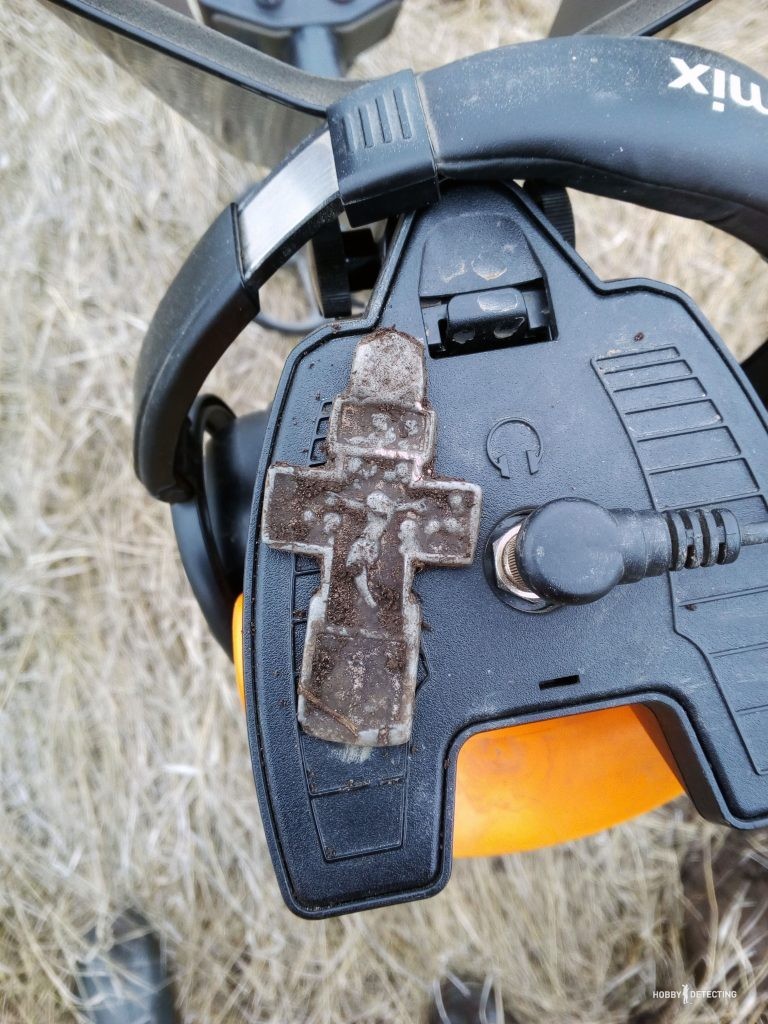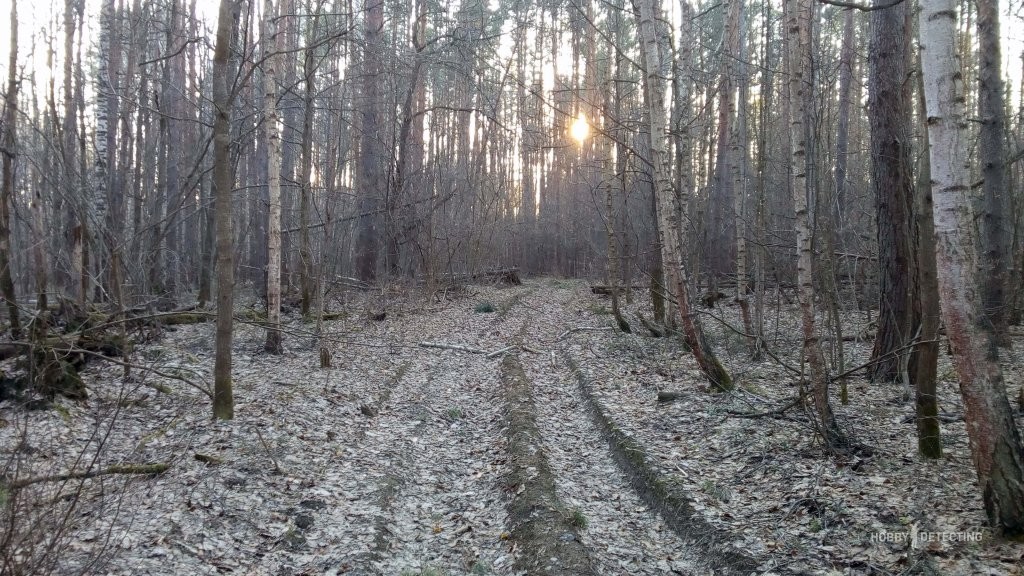Atypical places where you can collect coins. Personal experience
The other day, a friend of mine who has been interested in instrument search for a couple of years complained on the phone. Like, so and so he and his friend decided to get to a very distant farm, so far that even timber trucks don’t go to those parts in the summer. In general, according to the principle, the further into the forest, the more places there are. And what was his surprise at what he saw. Not only was the farmstead itself opened up using a grader, but the forest all around was pockmarked with holes from digging. One disappointment and that’s all, although he said that he found a very nice silver icon there.
There are still almost unexplored places to dig that can be found using old maps, and I once again confirmed this this week. If you are interested, you can read the report on such a trip.
Second trip to the burnt field, digging in the “knocked out” place

In this note, I want to share my experience of how I managed to find interesting and productive places to mine. Places that cannot be found using maps or other documents.
Places of folk festivals
What do you need to understand? The fact that every village and even the smallest village had places where people went for holidays. In villages, these were most often clearings or lawns near churches. But the village inhabitants gathered in groves, or on a hill, or near a ravine. People gathered, walked happily, they could even set up tables, an accordion or a gramophone, or just sing songs. And then how it goes. In my experience, I managed to find five such places:
- A birch grove a kilometer from the village, on the edge of a swamp.
- A hillock in a field, three hundred meters from the village. Most likely there used to be a small grove there.
- An abandoned football field between a river and a large village. This is where you need to be careful, the locals were very aggressive. Cows are grazed in that field and no one has dug a hole there before me. In general, the claims were made to me, what if a cow breaks a leg in a hole.
- And, the fifth place is a rural apple orchard. The garden is located about a kilometer from the village, my patience there lasted for half an hour. Well, a lot of vodka corks. In my case, this is one coin for 15 signals.

Boat shed
I found this place completely by accident. I was just visiting a place on the river bank where people used to walk actively and cheerfully. And then I wandered into a place I had never reached before. This is the corner of a small bay; perhaps there used to be a stream. It’s difficult to understand, in general, one might say it’s a backwater. The place there is low and during the flood everything is flooded. As I walk, my eye automatically catches a mound of fresh soil from a mouse hole. And there is black soil and a piece of ceramics. “This can’t be true,” I thought. Where does this come from? They won’t put up a single normal building here; it will be blown to hell in a flood. I started nursing the area at maximum sensitivity settings. The forged iron nails came, and now, at the limit of possibility, a weak signal. Cross 16th century. I left this place in reserve for now. Maybe in the future I’ll try to drill there. I made the assumption that, most likely, there was a place where boats were pitched and nets were repaired.

Markets at crossroads
These places can theoretically be determined from old maps. However, it will be very difficult to find them in the field. Just like on maps roads were drawn with approximate directions. And, in order to find the desired intersection, you can walk a square kilometer across the field.
What's the point? For example, there was a local road from one town to another, or from a large village to a railway station. Every day, oil is transported from a large village to the station for sale in wholesale quantities. There is no point in going to the villages, so residents of small villages went to crossroads and there they waited for the wholesaler’s cart to hand over to the intermediary. They settled the payments right there on the spot. The same thing happened when trading cucumbers or live fish. There were agreements that dealers would go to the city or station in the morning on certain days. So they were waiting for them at the crossroads.

Parish gatehouse
This is a very interesting topic. Also, these places can theoretically be determined in advance using old maps where to look. What's the point? During the time of division of lands into volosts, estates and communities, volost watchmen's houses were placed on the borders of the lands along the main roads. Such guardhouses had many tasks. From simple observation of wandering travelers, to performing customs functions. Who went where? What did you bring for sale, what did you bring with purchase? In such guardhouses, travelers could wait out a thunderstorm or a snowstorm, spend the night, feed and water their horses.

I learned about such guardhouses when I gave an elderly woman a lift from the city. She pointed out to me in one place by the road that there was a house there that once stood and her great-grandfather was a watchman in that house. Of course, the next day I went there with a metal detector and among the tall grass I saw a large pile of household garbage. However, I liked the idea and this spring I used this principle to find an 18th-century parish gatehouse. Photos of the finds are attached.

Thank you, dear friends, for your attention. If you have anything to add, we will always be happy to read your opinion. If the article was useful to you, please like and subscribe to our channel.
